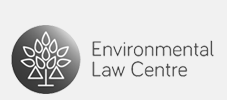
#410, 10115 100a Street Edmonton, Alberta T5J 2W2 Phone: (780) 424-5099 Fax: (780) 424-5133 Toll Free: 1-800-661-4238 Email: elc@elc.ab.ca CRA # 11890 0679 RR0001
Privacy Policy© 2019 Environmental Law Centre. All rights reserved.
[su_table responsive=”yes” fixed=”yes”]
General Outcome |
Alberta Environmental Laws 101 Connection to Curriculum |
| 2: Students will analyze the defense mechanisms used by the human body to protect itself from pathogens found in the external environment. | Toxins & Waste: Should we be doing more to protect humans from the effects of toxins? Students should evaluate the regulation of toxins & waste and consider what should be done going forward in light of the effects of toxins on the body. |
[/su_table]
[su_table responsive=”yes” fixed=”yes”]
General Outcome |
Alberta Environmental Laws 101 Connection to Curriculum |
| 3: Students will analyze, from a variety of perspectives, the risks and benefits of using chemical processes in meeting human needs and assess technologies for reducing the impact of chemical compounds on the environment. | Toxins & Waste: Are we doing enough to regulate our toxins & waste? Should we be doing more to protect the environment from the effects of toxins? |
[/su_table]
[su_table responsive=”yes” fixed=”yes”]
General Outcome |
Alberta Environmental Laws 101 Connection to Curriculum |
| 1: Students will explain the need for balancing the growth in global energy demands with maintaining a viable biosphere. | Energy Law: Will this goal be achieved more easily through the use of renewable or non-renewable energy? How will the reliance on renewable vs. non-renewable energy affect the biosphere – for example GHG emissions & their connection with climate change. |
| Climate Change: How will climate change affect this balance? | |
| 2: Students will describe the sun as Earth’s main source of energy and explain the functioning of some conventional and alternative technologies that convert solar, nuclear, tidal and other energy sources into useable forms. | Energy Law: Have students study different types of renewable energy – particularly those available in Alberta such as solar, wind, and hydropower. |
[/su_table]
Throughout each topic, we have highlighted connections to Alberta high school curriculum to assist students and teachers with connecting this resource to classroom learning.